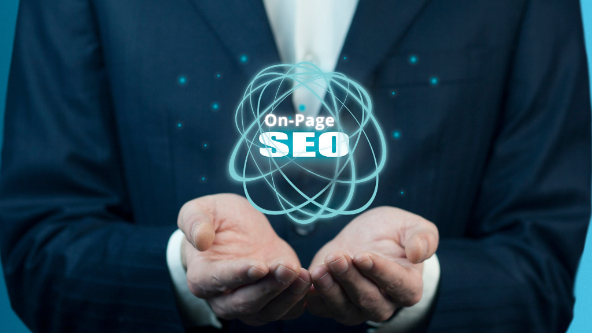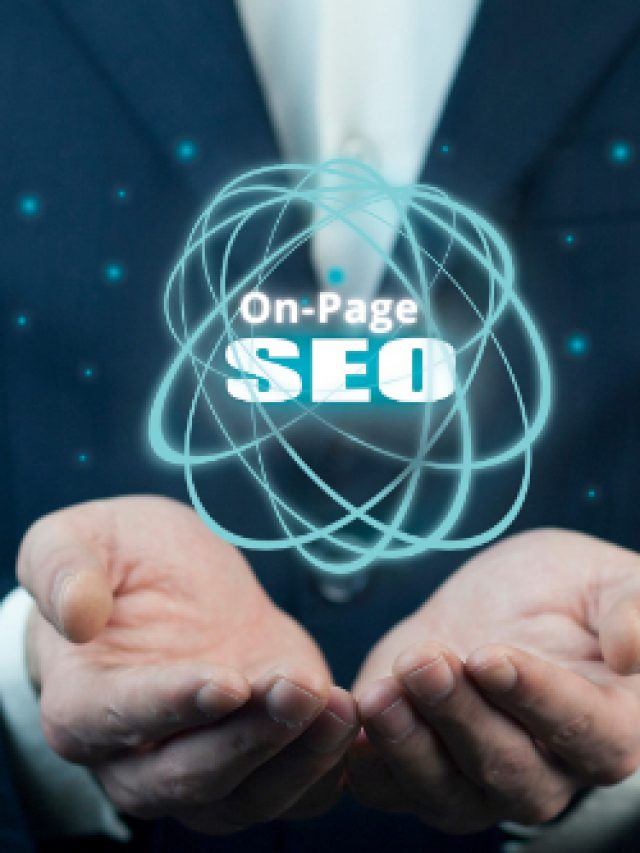
Learn what on-page SEO is, why it’s vital, and 10 of the most crucial on-page SEO aspects you should pay attention to in order to succeed.
To be successful in organic search today, you must optimise for a variety of characteristics that search engines value, including technical, on-page, and off-page variables.
Off-page approaches, such as link building, and other technical features have received more attention in recent years.
Off-page SEO, on the other hand, won’t help you much if you don’t pay attention to the basics — on-page SEO.
On-page optimization should always be a top priority for smart SEO practitioners.
Because the search landscape is constantly changing, it’s critical to keep your on-page SEO skills up to current.
We’ll go through what on-page SEO is, why it’s vital, and 10 of the most critical on-page SEO factors today in this piece.
What Is On-Page SEO?
On-page SEO (sometimes referred to as on-site SEO) is the process of optimising web pages in order to increase a website’s search engine ranks and generate organic traffic.
On-page SEO comprises optimising your headlines, HTML elements (title, meta, and header), and images in addition to posting relevant, high-quality content.
It also entails ensuring that your website possesses a high level of competence, authority, and credibility.
It considers a variety of factors on a webpage that, when combined, will boost your website’s visibility in search results.
Why On-Page SEO Is Important?
On-page SEO is crucial because it aids search engines in comprehending your website and its content, as well as determining whether it is relevant to a searcher’s query.
In search engine results pages, relevancy and semantics are becoming increasingly important as search engines get more sophisticated (SERPs).
With its variety of complex algorithms, Google is now far better at:
- Understanding what users are looking for when they type in a search query.
- Providing search results that are relevant to the user’s search query (informational, shopping, navigational).
- Adapting to this change is critical, and you can do so by making sure that your website and its content – both what is visible to users on your webpages (text, images, video, or audio) and elements that are only visible to search engines (HTML tags, structured data) – are well-optimized according to the latest best practises.
- Furthermore, you can’t just disregard on-page SEO because you have more control over on-site aspects than you have with off-page SEO, which relies on external signals (i.e., backlinks).
You’ll observe an increase in traffic and a rise in your search presence if you put work into on-page methods.
This guide will take you through the most critical on-page SEO aspects. Focusing on these ten areas can help you boost your content and authority, as well as your rankings, traffic, and conversions.
E-A-T
Expertise, Authoritativeness, and Trustworthiness (E-A-T) is the framework that Google raters use to evaluate content providers, webpages, and entire websites.
High-quality content has long been a priority for Google. It wants to ensure that sites that provide high-quality content are rewarded with higher ranks, while low-quality content sites are penalised.
There is a direct link between what Google regards to be high-quality content and what appears in search results.
Whatever you want to call it — correlation or causation – E-A-T is influencing Google’s organic search results in some way. As a result, E-A-T must be factored into your SEO approach.
Title Tag
The title tag, which is an HTML tag found in the head section of each webpage, serves as an initial cue or context for the topical subject matter of the page it is on.
It is prominently displayed in both the search engine results pages (usually as a clickable link) and the browser window.
Because the title tag has little impact on organic rankings on its own, it is frequently neglected.
However, title tags that are missing, duplicated, or badly written can all have a detrimental impact on your SEO results, so make sure you’re optimising for it.
Meta Description
Meta descriptions have been an important optimization factor since the beginning of SEO.
Meta descriptions, or meta tags that describe what a page is about, are frequently displayed in the SERPs beneath the page title.
While Google claims that meta descriptions have no bearing on results, anecdotal evidence suggests that indirect benefits of better descriptions do.
Correctly optimising the meta description can help you:
- Rate of click-through (CTR).
- Perception of the result’s quality.
- All of your visitors’ perceptions of what your website has to offer shift.
Headlines
Do you want your website’s content to rank well in search engines? Then begin crafting catchy headlines.
It may seem simple to come up with a title for a blog article, but a good headline can mean the difference between a click and an impression, which is why it’s critical to do so strategically.
To stand out in the SERPs, your headlines must pique visitors’ curiosity, entice them to click through and read the rest of the content.
Header Tags
Header tags (H1-H6) are HTML elements that separate headings and subheadings from other forms of text in your page (e.g., paragraph text).
Although header tags aren’t as vital for your site’s rankings as they once were, they still serve an important purpose – for both your users and your SEO.
They can have an indirect effect on your rankings by:
Making it easier and more pleasurable for people to read your information. Providing search engines with keyword-rich context about your content.
SEO Writing
SEO writing is creating material that is optimised for both search engines and users. There’s more to crafting good SEO content than keyword research and filling in the spaces.
Producing content just for the sake of it isn’t going to cut it. Keep in mind that you’re writing content for people, therefore it needs to be of good quality, significant, and relevant.
Keyword Cannibalization
Is this true or false? The more pages you have devoted to a particular keyword, the higher you will rank for that term. Targeting a single phrase over numerous pages can result in “keyword cannibalism,” which can have severe SEO repercussions. You’re actually competing with yourself if you have many pages ranking for the same keyword.
It’s critical to determine whether keyword cannibalism exists on your website and to address it as soon as possible.
Content Audit
Most content creators are so focused on developing new content that they overlook the need of auditing what they already have. And this is a blunder.
Auditing your current material is important since it allows you to:
Examine whether your current content is accomplishing its objectives and providing a return on investment.
Determine whether the information in your material is current or has become outdated (or even outdated).
Determine which content kinds are most effective for you.
Content audits are extremely beneficial to your SEO strategy and should be carried out on a regular basis.
Image Optimization
Adding photos to your webpages is a great way to make them more appealing. However, not all photos are made equal, and some can even cause your website to slow down.
By properly optimising photos, you can make the most of a vital SEO tool.
There are numerous advantages to image optimization, including:
- Additional options for ranking (show up on Google Image Search).
- A more pleasant user experience.
- Page load times are faster.
Images should not be a last-minute consideration. Make sure to utilise meaningful titles and alt text with photos that support your content.
User Engagement
Improving the on-page SEO aspects of your website is only half the battle.
The other half is ensuring that users do not bounce, but rather remain to examine your content, interact with it, and return for more.
Retaining engaged consumers is a difficult task in and of itself, but it is possible. Focus on areas such as site performance, user experience, and content optimization, among others, to boost user engagement.
Conclusion
If you want to improve your website’s chances of appearing in search results, on-page SEO is critical.
Regularly optimising for on-site characteristics can help you boost your rankings, visitors, and conversions.

